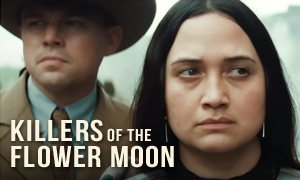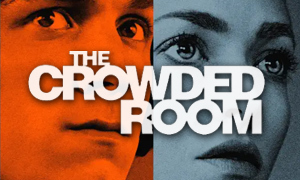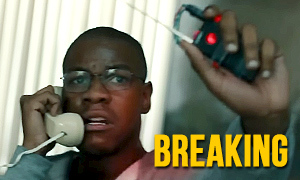The Mule: History vs. Hollywood
| REEL FACE: | REAL FACE: |
Clint Eastwood
Born: May 31, 1930 Birthplace: San Francisco, California, USA | Leo Sharp
Born: May 7, 1924 Birthplace: Michigan City, Indiana, USA Death: December 12, 2016, Michigan, USA Name changed to Earl Stone for the film |
Bradley Cooper
Born: January 5, 1975 Birthplace: Philadelphia, Pennsylvania, USA | Jeff Moore
Birthplace: Detroit, Michigan, USA Name changed to Colin Bates for the film |
Andy Garcia
Born: April 12, 1956 Birthplace: Havana, Cuba | Joaquín "El Chapo" Guzmán
Born: April 4, 1957 Birthplace: La Tuna de Badiraguato, Sinaloa, Mexico Name changed to Laton for the film |
Was the real drug mule named "Earl Stone"?
No. The Mule true story reveals that the name was changed for the movie. The real guy who inspired Clint Eastwood's character is Leo Sharp, a World War II veteran (not a Korean War veteran like in the film). Sharp's story gained national attention when The New York Times Magazine ran a 2014 article by Sam Dolnick titled "The Sinaloa Cartel's 90-Year-Old Drug Mule," which became the basis for the movie. The film offers a fictionalized backstory that tries to fill in the spaces Dolnick's article was unable to reach. Other names were also changed for the movie, as well as locations. For example, Sharp's home city of Detroit becomes Chicago in the film.
Is Clint Eastwood's character, Earl Stone, based directly on the real guy, Leo Sharp?
Not solely. Eastwood says that he partly drew inspiration for the character from his own grandfather, who owned a chicken farm. Eastwood would visit the farm when he was a boy. "He wasn't the guy who went off and did a lot of wild things, but he could have been, if he was of a different nature," Eastwood recalls. "He worked as an older man, he moved like an older man, and I tried to emulate his walk and talk and everything else." -USA Today
Was Leo Sharp really a horticulturalist?
Yes. A fact-check of The Mule movie confirms that Leo Sharp had a flower business in Detroit called Brookwood Gardens. This is one aspect of Clint Eastwood's character that is not fiction. He owned a flower farm near Michigan City, Indiana, which sits on the shore of Lake Michigan where he lived for decades. Sharp specialized in daylilies and is credited with having 180 official daylily varieties registered to him (there are currently more than 75,000 different daylilies registered with the American Hemerocallis Society). Neighbors recall busloads of customers waiting outside his front gate to buy his one-of-a-kind flowers.
Sharp also attended daylily conventions around the country, often dressed in either an all-white or an all-black leisure suit. He even had a southern farm in Apopka, Florida. Much of his business consisted of selling daylilies from a catalog he produced, but as more people turned to the Internet, his catalog business floundered in the late 1990s. He became involved in drug running as a way to make money and get the business out of debt.
How old was Leo Sharp when he started transporting drugs?
According to his lawyer, it is unknown exactly when Sharp started transporting drugs, but it likely began after his flower business fell on hard times in the late 1990s. The authorities said they have evidence that he was transporting drugs as far back as the year 2000 at age 76. The movie pushes this timeline forward a bit, beginning in 2005. -Daily Mail Online
Was Leo Sharp at first unaware that he had become involved in transporting drugs?
No. According to Sharp's lawyer, Darryl A. Goldberg, he believes that Sharp willingly became involved with the cartel through some of his Mexican farmhands (not via a Latino guest at his granddaughter's bridal brunch like in the film). "He has Mexican fellas working on the farms," says Goldberg. "They happen to know people who introduced him to other people who asked him if he wanted to get involved in something." It started out with ferrying cash, and then evolved into drugs. It is not uncommon for the cartels to seek out people who do not fit the mold of a typical criminal.
Picking someone older with no criminal record is fairly common. Another drug mule for the Sinaloa cartel was a 57-year-old man from Oklahoma named Walter Ogden. He had been on disability and had four heart attacks. Like Sharp, he certainly did not resemble a felon. Detroit D.E.A. agents busted him when he picked up $1.96 million in drug money from a warehouse in Wyandotte, Michigan.
"Leo is the perfect courier for the cartel," stated Jeremy Fitch, one of the D.E.A. agents involved in the case. "He has a legitimate ID, he's an older guy, he wouldn't be pegged as a drug runner, and he has no criminal history." -The New York Times
Was Leo Sharp really estranged from his ex-wife, daughter and granddaughter?
No. In researching The Mule true story, we learned that this part of the movie is entirely fictional and is not in The New York Times article on which the movie is based. The article sheds very little light on Sharp's family life. It doesn't mention his wife and only says that he is a World War II veteran with a daughter living in Hawaii. It also states that he is a great-grandfather.
A 2015 Daily Mail Online article describes Sharp as being a married father of three. According to records, his real wife's name is Ann. They were still married at the time of Sharp's death in 2016 (she had not died of cancer). She was only 3 years younger than Sharp, a far cry from the 18 years that separate the actors in the movie. In the film, Ann is fictionalized as a longtime estranged ex-wife named Mary and is portrayed by Dianne Wiest.
Is the movie based on actual things that happened while Leo Sharp was on the road transporting drugs?
No. In a USA Today interview, Clint Eastwood answered this by saying that his character in the movie, Earl Stone, differs from the real guy in that "we don't know what he incurred when he was on the road doing all these trips." This includes the fictitious sexual encounters that happen in the movie. Though, Sharp did tell a judge that his only prior brush with the law happened while he was in Mexico "taking motion pictures of a prostitute" (Salon).
Did Leo Sharp really become a Robin Hood-like figure and use his drug mule earnings to help people?
Yes. "He was able to get his farm out of hock and live a rather odd life," says director and star Clint Eastwood. This included taking time out to stop and help those in need. In the movie, we see him stuff a large amount of money into a container for a children's hospital fundraiser. He also uses his illegal money to renovate the local veteran's home. -USA Today
Is Bradley Cooper's character, D.E.A. agent Colin Bates, based on a real person?
Yes. A fact-check of The Mule movie reveals that Bradley Cooper's character was inspired by D.E.A. Special Agent Jeff Moore, who captured 87-year-old Leo Sharp in 2011. Moore was interviewed by The New York Times about the investigation and Sharp's capture, which was turned into the article "The Sinaloa Cartel's 90-Year-Old Drug Mule" by Sam Dolnick. Moore was described then as being 43 with "short, spiky dark hair and a thin goatee," which is confirmed in the photo below. A former Kansas City street cop, Moore had eventually become an undercover narcotics officer. He spent his time trying to infiltrate the city's crack houses from the inside, often with a prostitute in tow. He moved on and joined the D.E.A. in 2004. -The New York Times
How long did Leo Sharp operate as a drug mule?
Sharp transported drugs for roughly a decade before he caught the attention of the D.E.A., which eventually led to his capture. -The New York Times
How exactly did the D.E.A. learn about Leo Sharp?
A dealer named Tusa told the D.E.A. (including Agent Jeff Moore who Bradley Cooper's character is based on) of a heavyweight named Ramon Ramos, who was the bookkeeper for a drug trafficking ring affiliated with the Sinaloa cartel. After Moore obtained a search warrant for Ramon Ramos' house, they discovered over $350,000. Ramos, who is renamed Luis Rocha in the movie, agreed to cooperate, hoping that the D.E.A. could assist in getting him immunity and into witness protection. Like in the film, he wasn't Mexican and didn't have family down in Sinaloa country, which was another reason why he agreed to help.
Ramos was connected to everyone in the Detroit arm of the Sinaloa cartel. He told D.E.A. agent Jeff Moore about an elderly man who worked as a courier for the cartel. Ramos knew the man only as Tata. Grandfather. The D.E.A. heard the name during wiretapped cartel conversations. With the D.E.A. watching from a distance, Ramos met Tata at a local warehouse that the cartel used. Tata, whose real name was Leo Sharp, came to pick up three duffel bags full of cash. It was the first time that Agent Moore got a glimpse of Sharp. "I was kind of surprised that he seemed like he was in pretty good health," Moore recalled. "When you hear 87 years old, you think of someone in a wheelchair. He was in good shape." -The New York Times
Did Leo Sharp really transport as much cocaine as Clint Eastwood's character does in the movie?
Yes. Leo Sharp operated on a scale that the D.E.A. office in Detroit had never encountered before. The cartel's handwritten drug ledgers revealed that in 2010, Sharp was transporting well over 200 kilos of cocaine per month, reaching as high as 250 kilos in both March and April of that year. He is believed to have made over $1 million in 2010 alone. Jeff Moore, the D.E.A. agent after Sharp said that Sharp became an urban legend, transporting drugs for more than a decade. At his trial, Sharp admitted to transporting more than a ton of cocaine into Michigan in exchange for $1.25 million.
On the day of his capture, he was hauling 104 kilos, which would have earned him roughly $104,000 for that trip, given that couriers were typically paid $1,000 per kilo. -The New York Times
Did a cartel member really pull a gun on Leo Sharp?
This is unknown. If it happened, it didn't happen until late in Sharp's relationship with the cartel. Sharp claims that he wanted out but the cartel wouldn't let him leave. A wiretapped conversation recorded shortly before Sharp's arrest discussed whether the Grandfather would make another run. Viejo, who was in charge of Detroit distribution, was heard explaining that Sharp didn't want to make another run and that he can get "testy." Whether the cartel had to pull a gun to convince him, as Sharp claimed, is not known, but Sharp's attorney said that the recordings were enough evidence to show that a sick elderly man was being taken advantage of.
Prosecutors thought the notion was ridiculous, given the number of trips Sharp made and the sheer volume of cocaine he transported. They had evidence that he had been chummy with the cartel and even vacationed with Viejo in Hawaii. -The New York Times
Did Leo Sharp's capture happen like it does in the movie?
Sharp, who was known to authorities as "Tata" (Grandfather) was captured on October 21, 2011 at age 87. He was driving a Lincoln pickup truck on Interstate 94 toward Detroit. A dozen D.E.A. officers positioned themselves along a 70-mile portion of the highway. Each officer joined the pursuit as Sharp passed. He didn't even know he was being tailed. Eventually, the D.E.A. had a state trooper pull him over, making it appear like a routine traffic stop. Sharp stepped from his pickup and demanded to know why he had been pulled over. "What's going on, officer?" inquired Sharp. "At age 87, I want to know why I'm being stopped."
Another officer arrived with a drug dog named Apollo and the dog's response to the locked truck bed gave them probable cause to open it, despite Sharp initially claiming that he didn't have the key. Sharp knew his days as a drug mule were about to end. "Why don’t you just kill me and let me, just, leave the planet," Sharp told the officer. Inside the truck bed were piles of clothes and five duffel bags containing a total of 104 kilos of cocaine. The Sinaloa cartel's most notorious drug mule had been captured. -The New York Times
The movie portrays the capture a little more dramatically, with Clint Eastwood's character driving toward a road block. He stops and exits his truck as officers and D.E.A. agents swarm the vehicle. He does get pulled over by a trooper earlier in the film, but he avoids getting caught by rubbing muscle cream on the drug dog's nose.
What was Leo Sharp's punishment?
On October 8, 2013, Sharp plead guilty to drug-conspiracy charges. In an effort to avoid jail time, he asked if he could pay off the $500,000 fine he owed the government by growing Hawaiian papayas. The government didn't bite. The World War II veteran with no previous criminal history was sentenced to three years in federal prison. He was allowed to keep his daylily farm. It seems like a light sentence for such a prolific drug mule, but the defense argued that the cartel took advantage of an old man with dementia, an illness that a court neuropsychological assessment supported. "You’re dealing here with a man who was forced to do what I did by gunpoint," Sharp said to the magistrate.
The investigation into Leo Sharp helped lead to numerous raids across the country, as well as 19 indictments. The head of the Sinaloa cartel, Joaquín Guzmán (aka El Chapo), who is represented by Andy Garcia's character in the movie, was arrested in February 2014 during an unrelated investigation. He wasn't murdered like Andy Garcia's character in the movie. -The New York Times
After serving only a year in prison, Sharp was released in 2015 because of deteriorating health. He died in December of the following year and was buried in Honolulu, Hawaii.
Leo Sharp Interview & Related Videos
Delve deeper into The Mule true story by watching a brief news segment below that features Leo Sharp being interviewed on the day of his sentencing in 2014.







